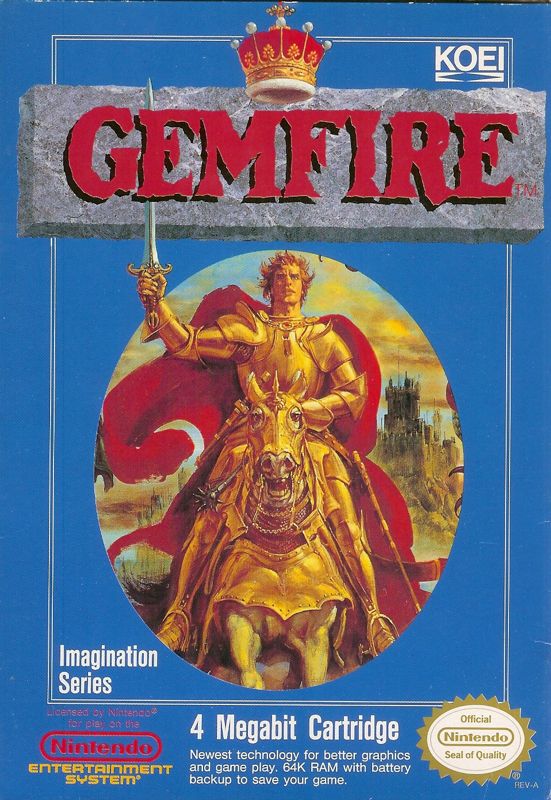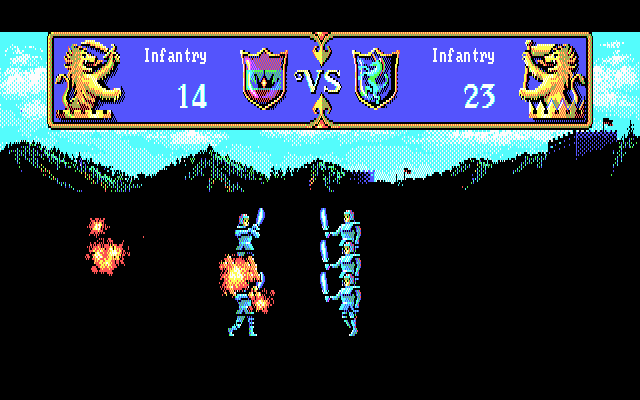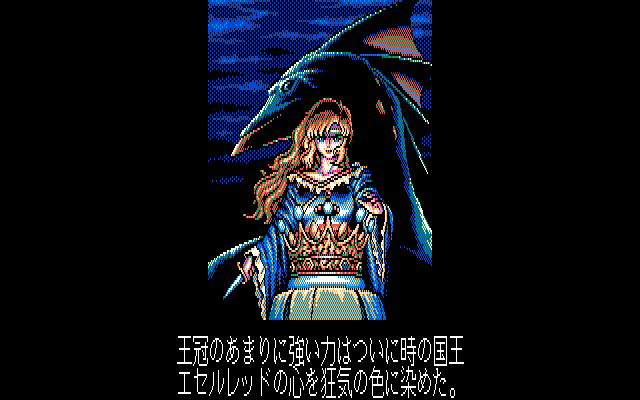Retro Replay Review
Gameplay
Gemfire delivers a classic turn-based strategy experience that challenges players to balance warfare and diplomacy as they vie for control of Ishmeria’s provinces. Every turn involves careful resource management—collecting gold, recruiting troops, and allocating food supplies to support your armies. The strategic depth arises from the need to consider both military might and political alliances, as forging nonaggression pacts or arranging marriages between noble houses can shift the balance of power without a single sword drawn.
At the core of Gemfire’s mechanics are the six liberated magicians, each bound to a magical gem and offering unique spells to influence the battlefield. Players must deploy these sorcerers wisely: offensive magic can decimate enemy formations, while defensive enchantments protect vulnerable units. However, spellcasting consumes the gem’s power meter, forcing players to decide whether to unleash a devastating arcane blast or conserve energy for a critical moment later in a prolonged campaign.
Combat sequences are presented on a grid-based battlefield where unit placement and terrain play pivotal roles. Cavalry charge more effectively across open fields, archers take cover behind hills, and rivers can stall advancing legions. This tile-based approach, combined with a variety of unit types—foot soldiers, pikemen, archers, cavalry—ensures that no two battles feel the same. Victory hinges on adapting tactics to both the opposing commander’s strengths and the shifting landscape of each skirmish.
Diplomatic actions add another layer of strategy: offering tribute, negotiating ceasefires, or making marriage proposals to other rulers can secure new allies or circumvent costly wars. Political maneuvering is especially crucial in the early game when rival houses are still assessing their own strengths. A well-timed alliance can open pathways to richer provinces or isolate a powerful foe, altering the course of your quest to overthrow King Eselred without resorting to endless bloodshed.
Finally, the campaign’s progression system rewards players who expand quickly and consolidate power. Controlled provinces yield greater revenues and manpower, allowing you to field larger armies and sustain magical assaults. The tension between rapid expansion and maintaining stable supply lines keeps each decision meaningful, ensuring that veteran strategists and newcomers alike will find Gemfire’s gameplay both accessible and deeply engaging.
Graphics
Given its 1991 release, Gemfire’s visuals are a testament to Koei’s ability to maximize limited hardware. The strategic map is composed of colorful, tile-based graphics that clearly indicate terrain types—forests, hills, rivers, and castles stand out distinctly, making it easy to plan troop movements. Although lacking the high-resolution detail of modern titles, the art style remains charming and functional, ensuring players can focus on strategy rather than deciphering icons.
Battle scenes feature side-view sprites that animate unit clashes with satisfying clarity. Infantry soldiers march forward, archers loosed arrows, and cavalry charges are punctuated by rhythmic sound effects. While the animations are fairly simple by today’s standards, they effectively convey the ebb and flow of combat, and veterans of retro gaming will appreciate the nostalgic flair. The color palette is rich without being garish, striking a balance between readability and atmosphere.
Character portraits of the six magicians and the notable noble champions are rendered with basic pixel art but succeed in imparting individual personality. Each magician’s gem glows with a distinct hue—ruby red, emerald green, sapphire blue—reinforcing their thematic identity and the types of spells they wield. The castles and provincial centers also have unique designs that reflect their ruling house’s heraldry, adding a sense of lore and visual variety across Ishmeria.
Menu screens are straightforward and logically arranged, allowing quick access to recruitment, diplomacy, and spellcasting options. While the user interface may feel dated compared to modern point-and-click standards, its simplicity minimizes confusion and streamlines turn execution. Overall, Gemfire’s graphics serve their purpose admirably, evoking the strategic gaming era of the early ’90s while providing a clear, enjoyable visual experience.
Story
Gemfire’s narrative spins a classic tale of tyranny, rebellion, and magical intrigue. The evil King Eselred of Ishmeria has imprisoned six powerful magicians within a central gem known as the crown Gemfire. Princess Robyn, his courageous daughter, dares to steal the Gemfire and free these sorcerers—an act that sets in motion the struggle for control of the realm. This setup provides an engaging backdrop for the political machinations and military campaigns that follow.
Once liberated, each magician chooses a noble house champion to lead in the fight against Eselred’s oppressive regime. The six houses—Jantiff, Thorid, Chalwen, Godwyn, Marquise, and Tyr—is each guided by distinct personalities, motivations, and relationships with the magical gem that empowers them. This multiplicity of perspectives encourages multiple playthroughs, as alliances and rivalries shift significantly depending on which champion you select.
The story unfolds organically through brief narrative vignettes before and after major events, such as the capture of a rival stronghold or the conclusion of a diplomatic treaty. Though dialogue is minimal by modern interactive storytelling standards, the game’s strategic ambitions compensate by letting players craft their own epic tale across the map of Ishmeria. Your victories—and defeats—become part of the lore, as noble houses rise and fall under your command.
Underlying Gemfire’s main campaign is a subtle commentary on the cost of power. The magicians can turn the tide of war with a single spell, but overreliance on magic drains their strength and risks leaving your forces vulnerable. Similarly, forging alliances can be as treacherous as waging war, reminding players that the pursuit of peace often entails morally grey decisions. These themes enrich what might otherwise be a straightforward conquest narrative.
Overall Experience
Playing Gemfire today is a nostalgic journey through the roots of grand strategy gaming. The thoughtful blend of resource management, tactical combat, and diplomatic intrigue offers a well-rounded experience that stands the test of time. While the absence of real-time action may feel slow to some, the deliberate pacing allows ample time for strategy and planning, making every campaign feel like a true exercise in statecraft.
The learning curve is gentle enough for newcomers to the genre yet deep enough to entice seasoned strategists. Koei’s reputation for quality historical sims, demonstrated in their later titles such as Romance of the Three Kingdoms, is evident in Gemfire’s carefully balanced systems. Players who appreciate the marriage of fantasy elements—magicians and spells—with solid military mechanics will find this title a rewarding diversion.
Replay value is particularly strong thanks to the six different champions and the dynamic interactions between noble houses. No two campaigns unfold identically, as shifting alliances and the strategic choices of rival AI lords create fresh challenges. Optional scenarios and variable difficulty settings further extend the game’s longevity, encouraging experimentation with aggressive conquests or diplomatic coalitions.
In summary, Gemfire remains a compelling choice for fans of turn-based strategy and retro gaming. Its fusion of magic-infused tactics, political maneuvering, and a captivating premise provides a unique flavor in Koei’s catalog. Though its presentation shows its age, the underlying gameplay mechanics are robust and enjoyable, offering hours of thoughtful engagement for anyone looking to conquer the kingdom of Ishmeria.
 Retro Replay Retro Replay gaming reviews, news, emulation, geek stuff and more!
Retro Replay Retro Replay gaming reviews, news, emulation, geek stuff and more!









Reviews
There are no reviews yet.